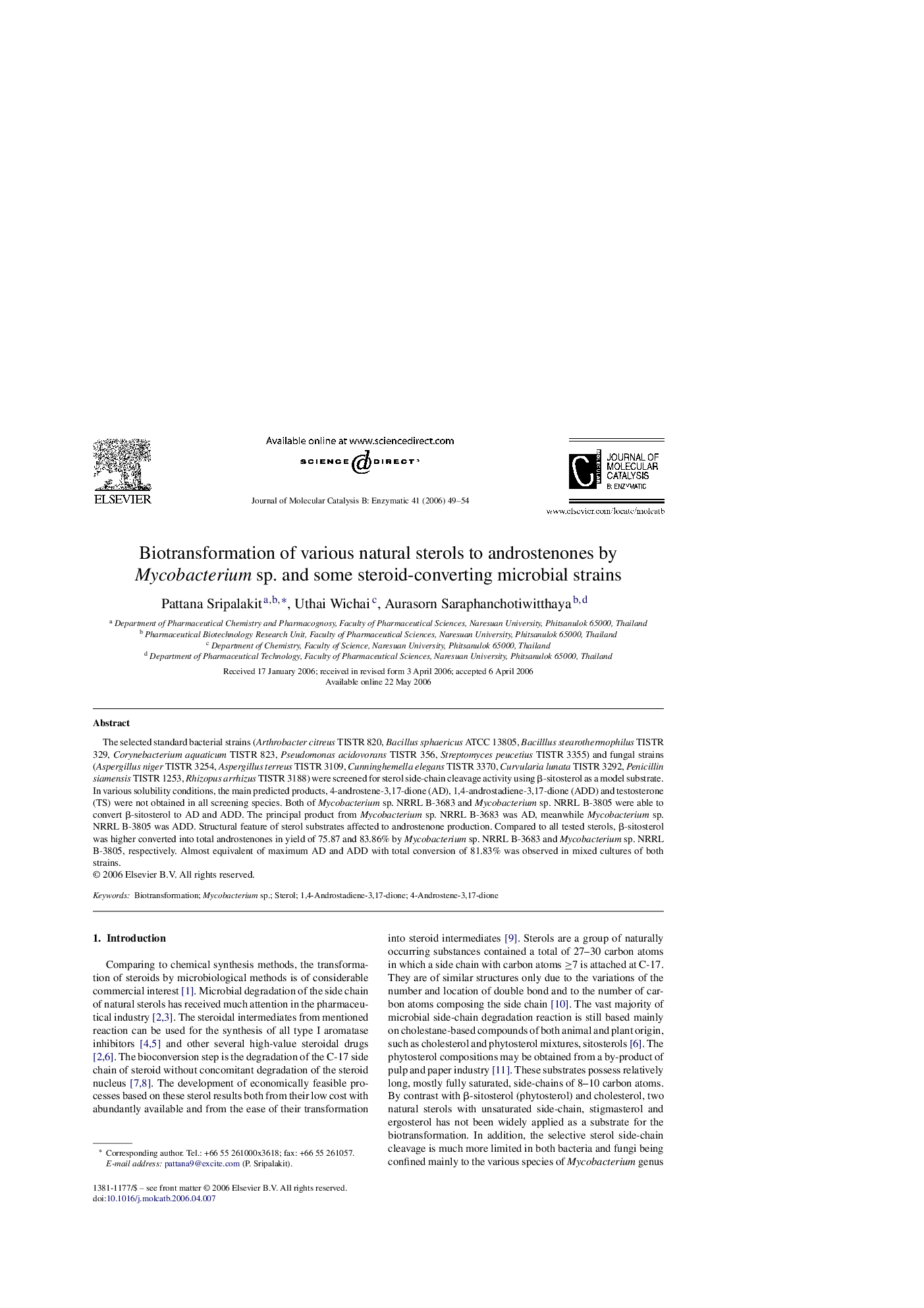| Article ID | Journal | Published Year | Pages | File Type |
|---|---|---|---|---|
| 70936 | Journal of Molecular Catalysis B: Enzymatic | 2006 | 6 Pages |
The selected standard bacterial strains (Arthrobacter citreus TISTR 820, Bacillus sphaericus ATCC 13805, Bacilllus stearothermophilus TISTR 329, Corynebacterium aquaticum TISTR 823, Pseudomonas acidovorans TISTR 356, Streptomyces peucetius TISTR 3355) and fungal strains (Aspergillus niger TISTR 3254, Aspergillus terreus TISTR 3109, Cunninghemella elegans TISTR 3370, Curvularia lunata TISTR 3292, Penicillin siamensis TISTR 1253, Rhizopus arrhizus TISTR 3188) were screened for sterol side-chain cleavage activity using β-sitosterol as a model substrate. In various solubility conditions, the main predicted products, 4-androstene-3,17-dione (AD), 1,4-androstadiene-3,17-dione (ADD) and testosterone (TS) were not obtained in all screening species. Both of Mycobacterium sp. NRRL B-3683 and Mycobacterium sp. NRRL B-3805 were able to convert β-sitosterol to AD and ADD. The principal product from Mycobacterium sp. NRRL B-3683 was AD, meanwhile Mycobacterium sp. NRRL B-3805 was ADD. Structural feature of sterol substrates affected to androstenone production. Compared to all tested sterols, β-sitosterol was higher converted into total androstenones in yield of 75.87 and 83.86% by Mycobacterium sp. NRRL B-3683 and Mycobacterium sp. NRRL B-3805, respectively. Almost equivalent of maximum AD and ADD with total conversion of 81.83% was observed in mixed cultures of both strains.
